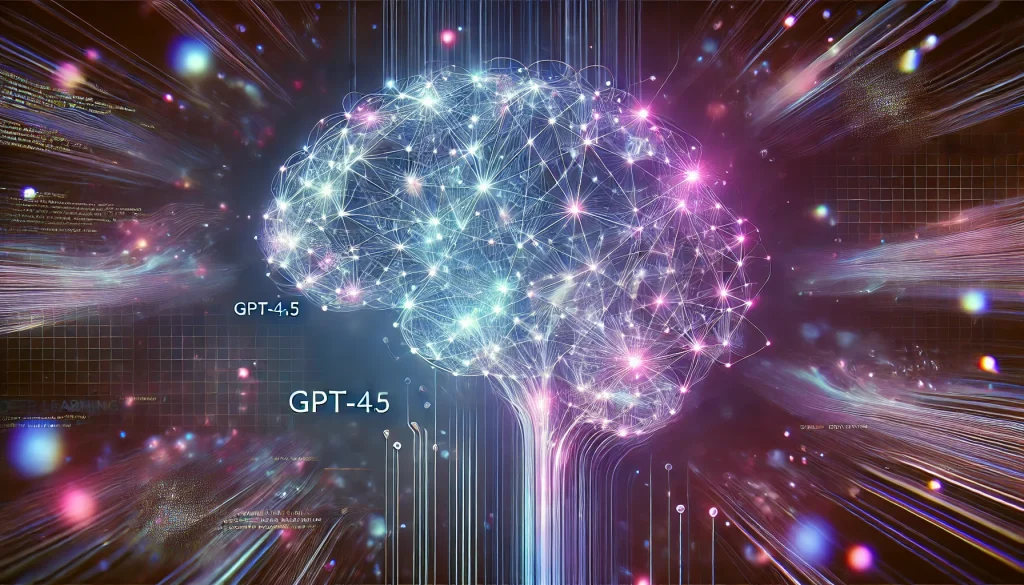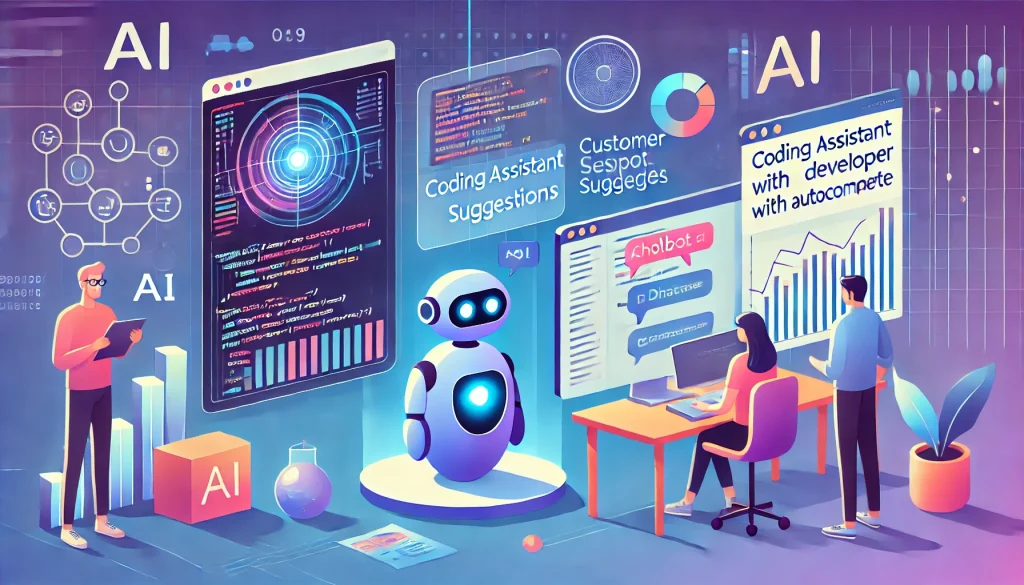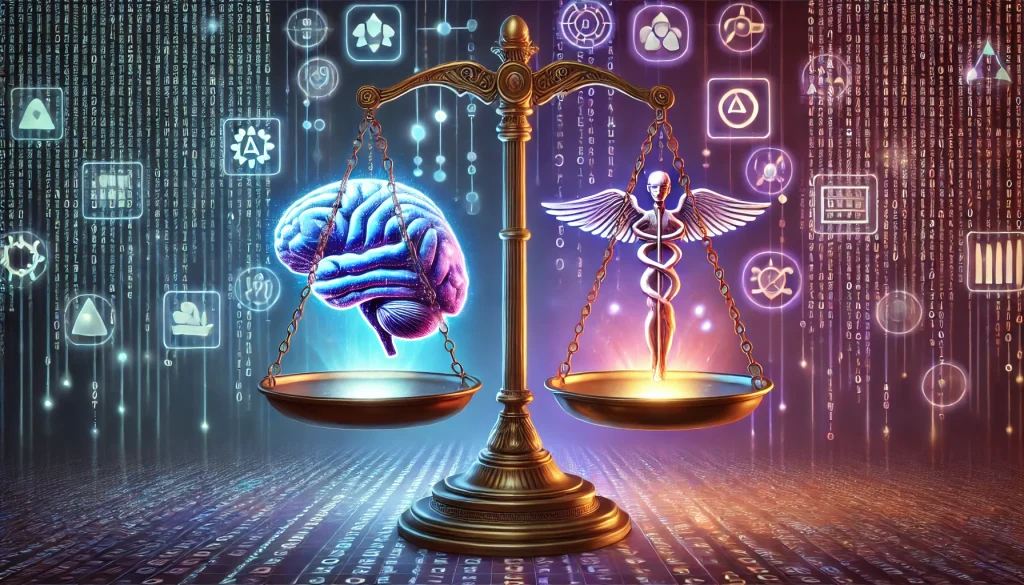When OpenAI unveiled GPT-4.5, the tech world took notice. As the latest in a series of increasingly powerful language models, GPT-4.5 promises more human-like language understanding and generation than ever before. These advancements aren’t just about bigger numbers—they empower AI-driven applications that can solve complex problems, automate tasks, and reshape how we interact with software.

1. What Is GPT-4.5?
1.1 Overview of GPT Series
OpenAI’s Generative Pre-trained Transformer (GPT) models have steadily evolved since GPT-2’s release in 2019, each iteration offering larger model sizes, more refined training techniques, and leaps in linguistic capability. GPT-4.5, described as OpenAI’s most advanced language model to date, builds on the success of GPT-3 and GPT-4 by incorporating:
- Larger Parameter Count: More internal “neurons” than any previous GPT version.
- Refined Training Methods: Enhanced data curation, multi-step reasoning tasks, and improved reinforcement learning from human feedback (RLHF).
- Multimodal Extensions: Preliminary abilities to handle not just text but also images or other data types (depending on how OpenAI eventually deploys these features).
1.2 Key Breakthroughs
- Better Context Handling: GPT-4.5 can maintain coherence in extended conversations, referencing earlier points without losing track.
- Advanced Reasoning: Early testers note improvements in logic puzzles, math problems, and tasks requiring multiple inference steps.
- Rich Language Nuances: GPT-4.5 is better at capturing subtle tones, dialects, or domain-specific jargon—whether legal, medical, or programming.
2. Why Next-Gen AI Models Matter

2.1 More Natural Human-AI Interaction
As language models approach near-human text comprehension, developers can create chatbots and virtual assistants that feel more personable and intuitive. Gone are the days of stilted, FAQ-based dialogues—modern AI can handle follow-up questions, recall user preferences, and interpret context seamlessly.
2.2 Enhanced Productivity & Automation
- Coding Assistance: Tools like GitHub Copilot (running on GPT-based systems) can help developers write boilerplate code faster, debug, or even suggest entire functions. GPT-4.5’s improvements in code comprehension could further reduce dev overhead.
- Content Generation: Businesses leverage AI for summarizing reports, generating marketing copy, or drafting legal documents. The accuracy and stylistic fluency of GPT-4.5 can streamline workflows.
- Analytics & Decision Support: AI can interpret large datasets or knowledge bases, offering insights that might be missed by manual analysis. GPT-based systems can present these findings as coherent narratives.
2.3 Boundary-Pushing Applications
From robotics (where textual reasoning might guide a robot’s navigation or manipulation tasks) to AI companions in gaming and virtual worlds, advanced language models open doors to experiences once limited to science fiction. GPT-4.5’s capability to parse complex instructions or user intentions fosters more immersive, responsive applications.
3. Potential Challenges and Criticisms
3.1 Ethical & Societal Concerns
Powerful AI raises ethical questions:
- Bias and Fairness: Despite improvements, large models can still produce biased or problematic outputs learned from real-world data.
- Misinformation: High-quality text generation can create convincing fake news or propaganda.
- Data Privacy: Training massive models often involves data scraping at scale—some worry about personal data inadvertently included in training sets.
3.2 Commercial Access & Competition
OpenAI typically provides API access to GPT, requiring developers to rely on a cloud-based service. Critics argue this centralizes advanced AI in the hands of a few big players, potentially stifling competition. Meanwhile, other organizations pursue open-source or locally hosted models to democratize usage.
3.3 Energy Costs
Training and running these huge models require substantial computational resources. Green AI advocates call for more efficient training methods or carbon offsets, especially as data centers expand. GPT-4.5’s bigger size or extended training cycles could exacerbate the environmental impact of AI unless mitigated by improved hardware and modeling techniques.

4. How to Leverage GPT-4.5
4.1 API Integration
Companies and startups can integrate GPT-4.5 through OpenAI’s API, using it for:
- Customer Support Chatbots: More context-aware, capable of debugging user issues.
- Personalized Content: Summaries, articles, or product descriptions tailored to each user.
- Data Analysis: Interpreting raw textual data and generating easy-to-read insights.
4.2 Prompt Engineering
AI’s output quality often depends on prompt engineering—carefully crafted instructions to guide the model. Developers must learn to:
- Be Clear & Specific: Provide context, constraints, or examples so GPT-4.5 knows your goal.
- Iterate: Experiment with rephrasing prompts or adding step-by-step instructions.
- Filter & Validate: Always review or post-process critical outputs for accuracy and bias.
4.3 Hybrid Solutions with Human Oversight
For high-stakes tasks (e.g., legal advice, medical triage), blending GPT-4.5 suggestions with human oversight ensures reliability and compliance. The AI can handle repetitive data entry or initial drafting, while humans confirm correctness.
5. Looking Ahead: Next-Gen AI & Beyond
AI’s evolution hasn’t hit a plateau. GPT-4.5 is a milestone, but future releases—potentially GPT-5 or specialized spin-offs—promise even more advanced reasoning, multimodal capabilities, and domain-specific intelligence. As AI labs compete to push model sizes and training techniques, we can expect:
- Improved Real-World Reasoning: AI that can chain thoughts more logically, handle data from multiple modalities, and plan complex tasks.
- Cost & Efficiency Focus: Efforts to trim model size or use more efficient approaches, making advanced AI accessible to more developers.
- Regulatory Guidelines: Governments and industry bodies pushing for transparency in AI systems, especially for large-scale language models that shape public discourse.
For developers, staying in tune with these leaps is crucial. The next wave of AI can revolutionize code generation, user experiences, and business workflows, turning once-futuristic ideas into everyday realities.
Conclusion
GPT-4.5 stands as a significant leap in natural language processing, paving the way for AI-driven applications that feel more dynamic, context-aware, and lifelike. Whether you’re building a chatbot, an intelligent coding assistant, or an analytics solution, advanced models like GPT-4.5 can supercharge creativity and productivity. Yet with great power comes great responsibility—questions of bias, data privacy, and ethical deployment loom large.
Key Takeaways:
- Contextual Intelligence: GPT-4.5 better retains conversation history and reasoning steps.
- New Applications: Smarter automation, content creation, and analytics across industries.
- Challenges: Biases, misinformation, energy consumption, and centralized control must be carefully managed.
- Future Outlook: Expect more advanced or specialized AI models soon, raising the bar for what software can do.
As AI continues to evolve, those who explore GPT-4.5 and next-gen models can gain a crucial edge—unlocking novel features and more engaging user experiences. Whether you’re an entrepreneur, developer, or researcher, these powerful models are shaping the next decade of innovation.














